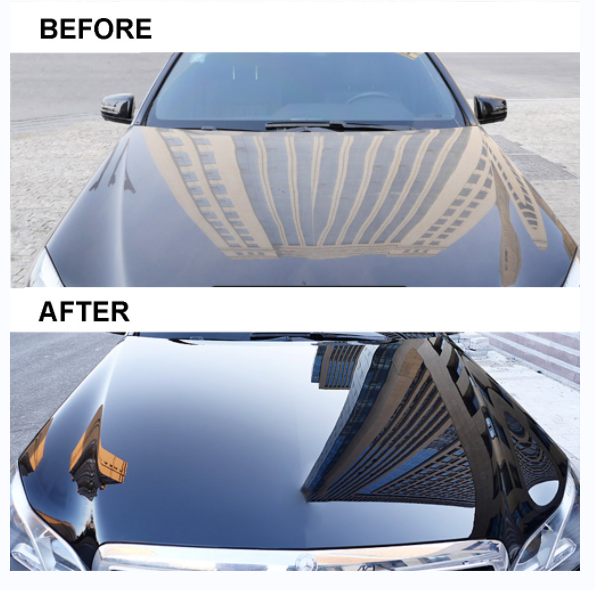A Comprehensive Overview to the Sorts Of Ceramic Coating on the Market
Ceramic layers have actually emerged as an essential option across various sectors due to their one-of-a-kind residential properties and applications. As we check out the distinctive characteristics and applications of these finishings, the effects for performance and longevity come to be significantly obvious, increasing questions regarding which type may best suit your needs.
Understanding Ceramic Coatings
Ceramic coverings are sophisticated safety remedies that have gained appeal in numerous sectors, especially in auto and aerospace applications. These coatings contain a fluid polymer that, when cured, forms a resilient, hydrophobic layer on the surface area of the substratum. This layer provides enhanced resistance to ecological pollutants, UV radiation, and chemical direct exposure, thus prolonging the life and visual charm of the underlying material.
The basic component of ceramic layers is silica, which contributes to their firmness and toughness. The application process commonly includes surface preparation, application of the layer, and curing, which can be accomplished via heat or UV light. Once healed, ceramic finishes display outstanding bonding residential properties, permitting them to adhere strongly to a variety of surfaces, consisting of steels, plastics, and glass.
Along with their protective features, ceramic coatings also supply convenience of maintenance. Their hydrophobic nature lowers the adherence of dust and gunk, making cleaning less complex and much less frequent. On the whole, the fostering of ceramic finishings represents a considerable innovation in surface protection innovation, offering both practical and visual advantages throughout numerous markets.
Kinds Of Ceramic Coatings
Different kinds of ceramic finishes are offered, each made to satisfy particular performance needs and applications - Car Detailing. One of the most common kinds consist of:
Silica-based Coatings: These layers largely contain silicon dioxide and are known for their resilience and chemical resistance. They are widely made use of in automotive and industrial applications.
Titanium Dioxide Coatings: Distinguished for their photocatalytic residential properties, titanium dioxide layers are typically applied in environments where self-cleaning and antifungal residential or commercial properties are desirable, such as in building materials and automotive surfaces.
Zirconia Coatings: Identified by their high-temperature stability and thermal resistance, zirconia finishes are utilized in applications such as turbine engines and high-performance automobile parts.
Alumina Coatings: Showing outstanding hardness and thermal security, alumina finishes are often made use of in wear-resistant applications, including cutting devices and industrial equipment. - Paint Protection Film
Crossbreed Coatings: Integrating the homes of various materials, hybrid finishes use improved efficiency qualities, making them ideal for unique and demanding applications.
Each type of ceramic layer offers distinct functions, permitting customers to choose the most suitable remedy based upon specific ecological problems and performance requirements.
Advantages of Ceramic Coatings
Ceramic finishes, in specific, offer numerous advantages that make them progressively preferred amongst suppliers and customers alike. These finishes are resistant to scratches, chemicals, and UV rays, guaranteeing that the underlying surface stays protected over time.
Along with longevity, ceramic coverings give superb hydrophobic buildings, permitting for easy cleansing and maintenance. This water-repellent nature decreases the adherence of dust, crud, and other pollutants, which can extend the aesthetic appeal and performance of the surface area. Furthermore, ceramic finishes can considerably enhance thermal resistance, making them excellent for applications that withstand heats.

Application Refine
When applying ceramic layers, a meticulous strategy is essential to Going Here achieve optimum results. A tidy surface area makes sure correct adhesion of the finish.
As soon as the surface area is prepped, the next step is to use the ceramic finishing. The coating should be used in thin layers, as thicker applications can lead to unequal surfaces.
After application, the covering needs a details healing time, usually varying from a few hours to a full day, depending on the item. Following these actions diligently will take full advantage of the effectiveness and longevity of the ceramic finishing, supplying a long lasting protective layer for the surface area.
Maintenance and Durability
To guarantee the durability and effectiveness of a ceramic layer, routine maintenance is vital. Ceramic coatings, understood for their resilience and safety qualities, need details care regimens to optimize their life expectancy and performance. The primary step in upkeep includes routine cleaning with pH-neutral soap, avoiding severe chemicals that can degrade the coating. It is a browse around here good idea to clean the car frequently, ideally every 2 weeks, to stop the build-up of contaminants that could endanger the finish's stability.
Along with routine cleaning, regular examinations are essential. Seek indicators of wear or damage, such as hydrophobic properties lessening or surface area blemishes. If required, a light polish may be related to renew the finishing without stripping it away.
Additionally, the application of a booster spray can boost the coating's hydrophobic impacts and restore its gloss. This is particularly advantageous for layers that have been in usage for an extensive duration. Ultimately, by sticking to these maintenance techniques, one can considerably expand the life of a ceramic layer, making sure that it remains to provide ideal defense against environmental factors and preserve the aesthetic appeal of the vehicle.
Final thought
